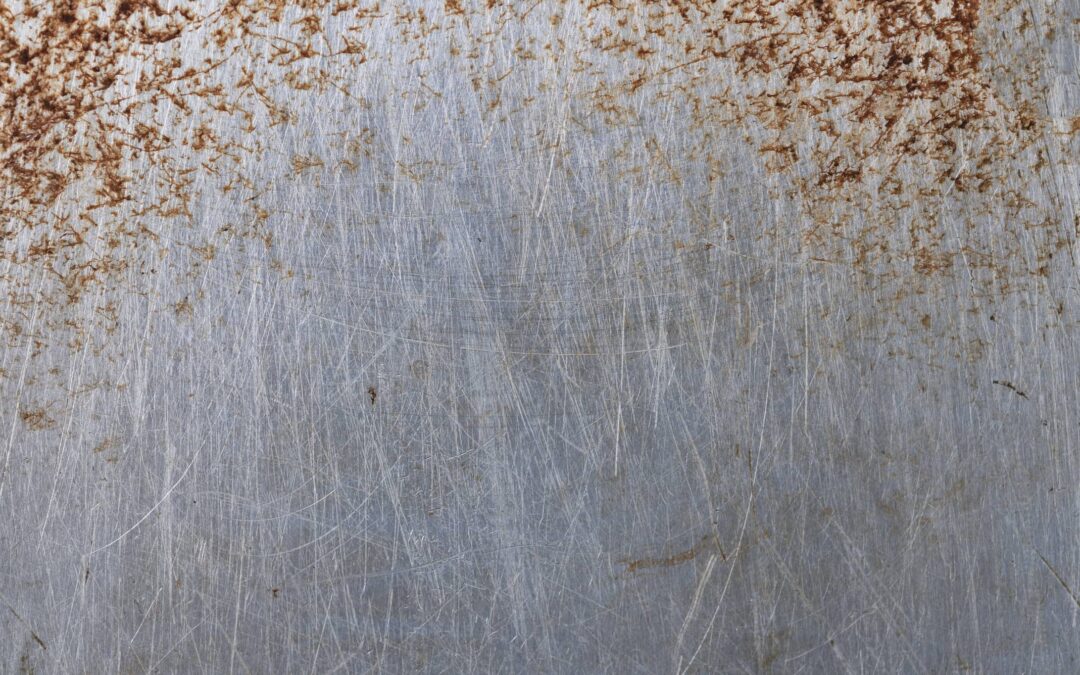When you think of stainless steel, you probably imagine a material that’s tough, sleek, and virtually invincible against the elements. It’s the superhero of metals, commonly used everywhere from modern kitchen appliances to towering skyscrapers because of its notable strength and timeless aesthetic. But even superheroes have their weaknesses.
So can it really stand up to everything, or does it have its own kryptonite? Can stainless steel tarnish? Despite its name and reputation, stainless steel isn’t completely immune to tarnishing. The key to its resistance lies in its chromium content, which forms a protective oxide layer that shields the underlying metal from corrosion and tarnish.
However, if this layer is damaged or exposed to harsh conditions like extreme moisture, abrasive chemicals, or salt, it can break down. When this happens, stainless steel can begin to tarnish.
Why stainless steel isn’t immune to tarnish
Stainless steel contains chromium. When chromium is exposed to oxygen, it forms a thin protective layer of chromium oxide on the surface of the steel. This layer acts as a barrier that prevents oxygen and moisture from reaching the underlying metal, thus protecting it from corrosion and tarnish.
However, under certain conditions, this protective layer can be compromised.
For instance, if stainless steel is exposed to harsh chemicals, abrasive materials, or even high salt environments (like coastal areas), the chromium oxide layer can break down. Once the protective layer is damaged, the steel underneath becomes vulnerable to corrosion and tarnish.
Also, not all stainless steel is created equal. Different grades and compositions of stainless steel have varying levels of corrosion resistance. Lower grades of stainless steel, with less chromium, are more susceptible to tarnishing and corrosion than higher-grade stainless steel with higher chromium content.
Therefore, while stainless steel is a robust and reliable material, maintaining its appearance and longevity involves proper care and understanding the environmental factors that can impact its durability.
Pro tip
Regularly clean metal items to remove dirt, oils, and residues that can accelerate tarnishing. Use a soft cloth and, if necessary, mild soap with water. For more delicate or intricately designed items, consider using a specialised cleaning product appropriate for the type of metal.
What makes metal tarnish
1. Oxidation
This is a chemical reaction involving the metal and oxygen. Oxidation is a primary cause of tarnish, especially for metals like silver and copper. When these metals come into contact with oxygen, they undergo a reaction that forms a dull, often darker layer on the surface known as an oxide.
Pro tip
Regularly clean metal items to remove dirt, oils, and residues that can accelerate tarnishing. Use a soft cloth and, if necessary, mild soap with water. For more delicate or intricately designed items, consider using a specialised cleaning product appropriate for the type of metal.
2. Corrosion
While similar to oxidation, corrosion typically refers to the deterioration of a metal caused by reactions with various environmental chemicals, not just oxygen. For instance, iron corrodes to form rust (iron oxide) when it reacts with oxygen and moisture. This process not only alters the colour and texture of the metal but can also degrade its structural integrity.
Related articles:
Top 7 Benefits of Stainless Steel – Why It’s the Best Material
How to Maintain Stainless Steel Standoffs
Where to Buy Standoff Screws – FIX Systems
3 Environmental Considerations With Standoff Fixings
3. Humidity and moisture
Water accelerates the tarnishing process by acting as a medium that facilitates the chemical reactions leading to tarnish. Moisture can seep into microscopic cracks or defects on a metal’s surface, leading to more extensive oxidation and corrosion.
4. Chemical exposure
Exposure to harsh chemicals, including acids and alkalis, can break down the protective oxide layer on metals. Common household chemicals, pollutants, or even acidic foods can speed up the tarnishing process. Chlorides, like those found in salt, are particularly aggressive and can cause pitting and staining on metal surfaces.
Pro tip
Keep metals away from harsh chemicals and cleaners that can strip away protective layers and promote tarnishing. This includes removing jewellery before swimming in chlorinated water or handling cleaning products.
5. Contact with skin
Our skin naturally secretes oils and sweat, which contain salts, fatty acids, and other compounds. When metal jewellery, for instance, comes into contact with skin, these substances can react with the metal, leading to tarnish. This is often seen in jewellery items made from silver or copper, which develop a patina or tarnish more quickly when worn frequently.
Frequently Asked Questions
What is the difference between rust and tarnish?
Rust and tarnish are both forms of corrosion but affect different metals and appear under various conditions. Rust specifically refers to the corrosion of iron and its alloys, such as steel, and is characterised by reddish-brown flaking and crumbly texture. It occurs when iron reacts with oxygen and moisture.
Tarnish, on the other hand, affects non-ferrous metals like silver, copper, and brass. It involves a surface discolouration and dulling that occurs due to chemical reactions with sulphur compounds or oxidation.
Do you provide custom standoff fixings?
Yes, we do provide custom standoff fixings. Whether you need specific sizes, finishes, or materials, we can accommodate a wide range of custom requirements to ensure that your project specifications are met precisely. Feel free to reach out with your project details, and we’ll be happy to discuss your custom needs.
Can stainless steel standoff fixings be used outdoors?
Absolutely! Stainless steel standoff fixings are an excellent choice for outdoor applications due to their high resistance to corrosion and weathering. They are particularly useful in environments that are prone to moisture and salt exposure.
How do I maintain and clean my stainless steel standoff fixings?
Start by wiping them down regularly with a soft, lint-free cloth to remove dust and debris. For more thorough cleaning, use warm water and a mild detergent, then rinse with clean water to avoid leaving any soapy residue. For stubborn dirt or fingerprints, a solution of vinegar and water can be effective.
Always dry the fixings after cleaning to prevent water spots. Avoid using harsh chemicals or abrasive tools, as these can scratch the surface and compromise the protective oxide layer.
Why did my stainless steel jewellery tarnish?
While stainless steel is highly resistant to tarnish, it’s not completely immune, especially under certain conditions. Tarnishing can occur if the stainless steel has been exposed to harsh chemicals, chlorine, or salty environments, which can break down the protective chromium oxide layer.
Does stainless steel rust or tarnish?
Stainless steel is designed to be resistant to rust and tarnish due to the presence of chromium, which forms a protective oxide layer on the surface. However, this doesn’t make it completely impervious.
Under harsh conditions, such as exposure to saltwater, chlorine, or certain chemicals, this protective layer can degrade, leading to rust or tarnish. Regular maintenance and appropriate environmental usage can help prevent these issues and extend the life of your stainless steel items.
Experience stainless steel durability with FIX standoff fixings
Stainless steel is great for its durability and clean look, but like anything valuable, it needs a bit of care. A simple wipe here and some gentle cleaning there can go a long way in keeping it spotless and shiny.
At FIX, we’re all about providing you with stainless steel standoff fixings that not only last but also add a sleek touch to your projects. Whether you’re decking out a space indoors or braving the elements outside, our fixings stand up to the challenge. See how our solutions can make a difference in your next project today.
Phone
We deliver standoff fixings to homeowners, designers, and commercial business owners across the world. Whether you’re in Australia or overseas, we have the architectural hardware to fit your needs.

